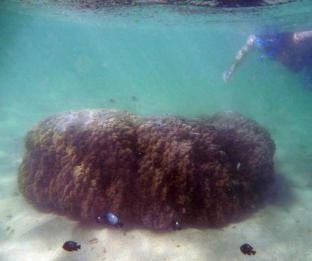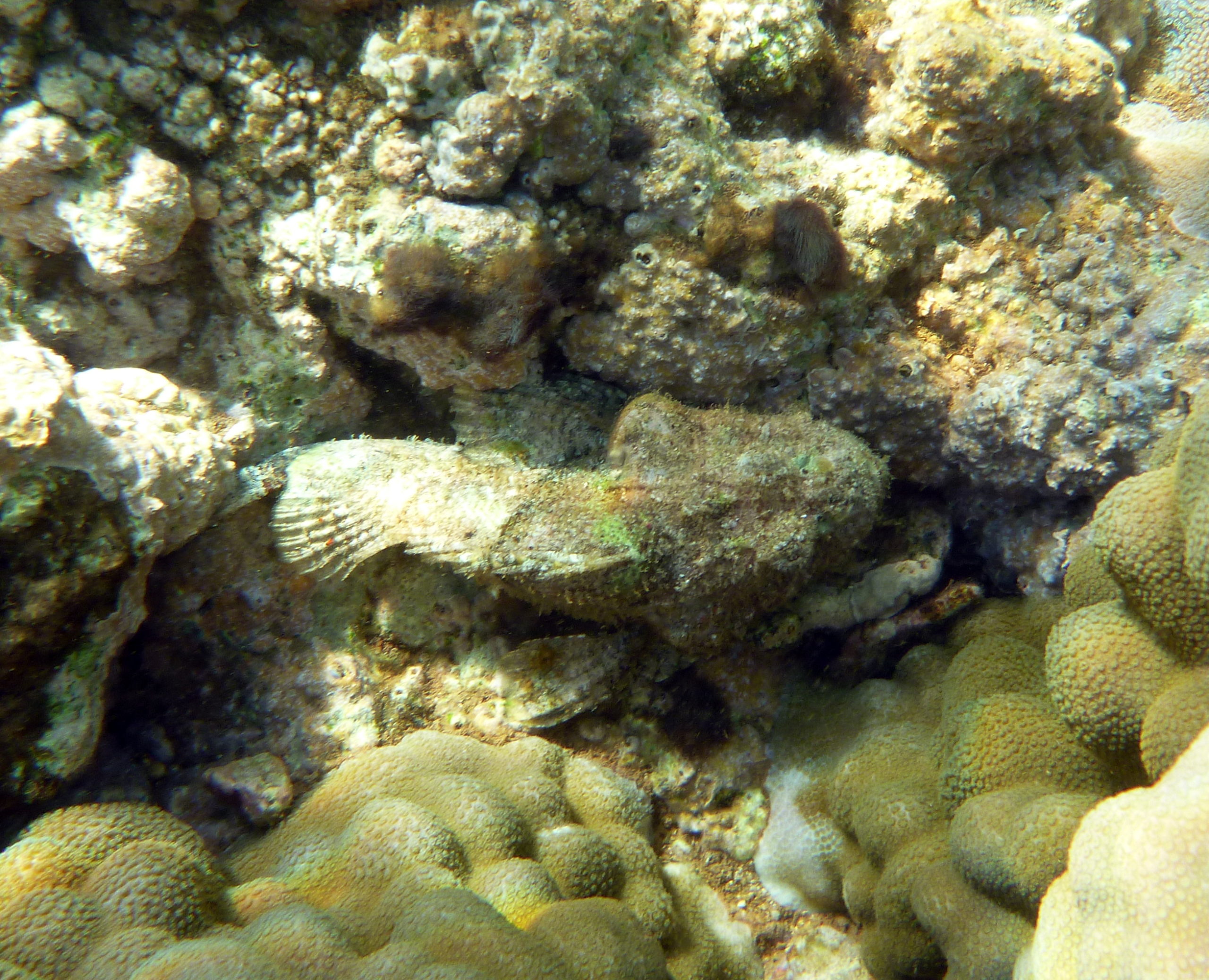Published in the Ocean Watch column, Honolulu Star-Advertiser © Susan Scott
September 26, 2011
Stony corals rank high on my please-don’t-ask-me-to-name-it list. I understand the basics of how these reef-builders eat, secrete, breed and build, but there are so many species and so many forms, colors, shapes and textures of each of those species, I’ve given up trying to identify them. I enjoy them nameless.

Photo by Susan Scott
Some domino damselfish cluster around the Fuller Brush Rock, aka mound coral.
One coral head I like so much, though, I made up a name for it. Years ago I found about 20 furry shrimp, a new species for me, clinging to the top of a free-standing, 5-foot-wide coral head that looks like a giant apple fritter. When the author of several excellent local marine animal guides, John Hoover, came to visit, I showed him the 1- to 2-inch-long brown shrimp.
“I don’t know their real name,” he said. “I call them Fuller Brush shrimp.”
Those shaggy shrimp fascinated me for months, hanging on through big surf, low tide and rainy runoff. I began to call the coral head Fuller Brush Rock.
One day the tenacious little shrimp were gone, and I never saw them again, there or anywhere else. But I still visit the coral head regularly because for other marine animals Fuller Brush Rock is the Ritz.
During my snorkeling visits, I am careful not to touch the coral’s surface because hands can harm tiny coral animals. Another good reason for my hands-off policy is that devil scorpion fish love to sit on its flat top trying to be invisible (I see you!). Also, in the valleys of the coral’s rolling lobes perch three Hawaiian green lionfish, also members of the stinging scorpion fish family.

Scorpionfish on Fuller Brush Rock
This month in and around Fuller Brush Rock, I found a pair of red-and-white banded coral shrimp, a big-eyed conger eel (another first for me) and the smallest spiny lobster I’ve ever seen.
Fluttering around the coral like confetti are countless domino damselfish, black with bright white patches on each side and neon-blue headlights, and tiny Hawaiian sergeants, bright yellow with black stripes.
Fuller Brush Rock is also home to snapping shrimp, their petroglyph-looking canals lined with stinging hydroids. Last week I noticed that the coral head’s nursery now includes several baby butterfly fish.
For years I’ve been visiting this lovely lump of life I call Fuller Brush Rock, and didn’t know the species of coral that built it. Now I do. Sort of.
This coral is known by the experts as mound coral. But identification is complicated because mound coral has various appearances. Hawaii biologists and photographers Keoki and Yuko Stender, whose Web photos I use often and highly recommend, have posted on their site 39 photos of this coral species in its multiple variations: tinyurl.com/3v4n8jf.
Names are another conundrum. The Stenders call this brown lobe coral Porites evermanni, and write that it is found only in Hawaii. John Hoover writes the same in his guide. That’s been changed: More recently this coral has been identified from the Red Sea to the East Pacific and is now, until further notice, called Porites lutea, or mound coral.
I’m glad to know my coral head’s scientific and official common names. Still, I’m sticking with Fuller Brush Rock.